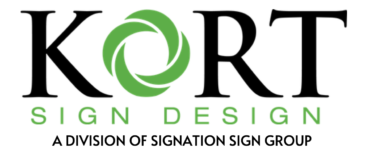A professional looking exterior building sign is crucial for letting people know where you are, attracting new customers, and communicating your value. A “cheap” sign may send the wrong signals, although it’s better than nothing. (As you’ve probably heard, “A business with no sign is a sign of no business.”)
Step 1: Talk to your landlord about their requirements for building signage. It’s probably outlined in your lease agreement, but you should make sure nothing has changed. Some building owners may have a sign plan to keep a consistent look across all the different businesses in the building, which would limit the colors, fonts, shape and size of your sign. No matter how strict your building’s sign requirements, we recommend getting your landlord’s approval of a mockup of the design, size and placement before the sign is produced.
Step 2: Check with city hall regarding their rules and regulations. Every city is different. Usually, but not always, your sign allowance is based on the linear feet of the wall you want to put the sign on. And just because down the block a company has a sign you like, they may be in a different zone that allows that type and size of a sign (but yours doesn’t). Every city has a different application process, fees and timeline for issuing sign permits too. It’s a hassle you probably don’t have time for, so let us do the legwork.
Step 3: Once you know what you are allowed to do, give us a call and we can help figure out how to make the best looking sign possible within the guidelines of your building’s rules and the city’s signage codes. There is a huge variety of materials to choose from – routed acrylic or PVC, channel letters, reverse channel letters, illuminated cabinets, neon, LED, digital displays – and everything in between, to make your sign stand out. Work with a professional and you’ll be pleasantly surprised instead of completely stressed out.


